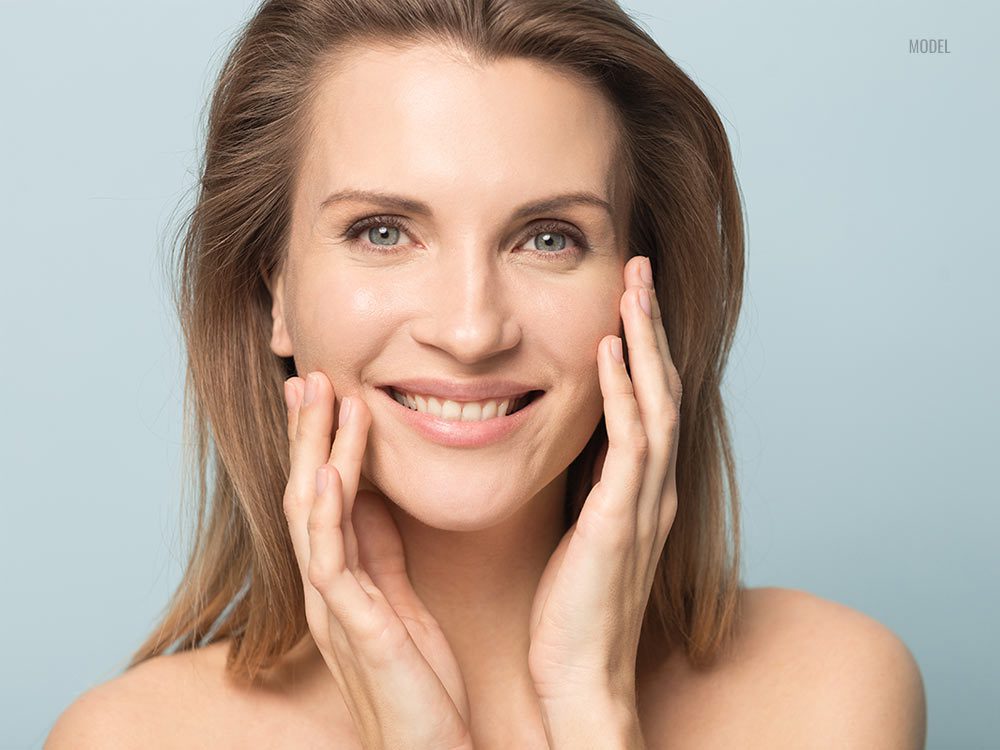Mohs Surgery | The Office of Dr. Vincent Hung
When successfully treated, skin cancer often necessitates reconstruction to restore the appearance and function of the affected areas. Various techniques are employed based on the location and extent of the damage the cancer has caused. In this detailed guide, we’ll explore the cosmetic reconstruction methods commonly used after skin cancer treatment on the nose, lips, ears, eyelids, extremities, and scalp. We will also provide information on Mohs surgery to treat the cancer itself.
4 Min Read:
Treating Skin Cancer With Mohs Surgery
Mohs surgery is an advanced surgical approach to remove cancerous tissue from the skin. This method offers superior cancer removal results while preserving an optimal amount of healthy tissue, contributing to less scarring and more ideal outcomes after reconstruction or natural healing.
Nose and Lips Reconstruction
The following techniques are most effective for the reconstruction of the nose and lips:
- Direct linear closure: For smaller defects on the nose or lips, direct linear closure is often preferred and involves stitching the edges of the wound together to minimize scarring and maintain natural contours.
- Local flaps: Larger defects may require local flaps. This method involves repositioning nearby tissue with a similar blood supply to cover the affected area. This approach preserves the aesthetic harmony of the nose or lips.
- Distant flaps: In cases where local tissue is insufficient, distant flaps can be used. This technique involves obtaining tissue from a different area of the body while maintaining blood supply to ensure effective coverage for more significant defects.
- Skin grafts: A skin graft may be employed in some instances, especially when tissue loss is extensive. This procedure involves taking a piece of skin from a donor site elsewhere on the body and placing it over the treatment area. Skin grafts can be successful for nasal and lip reconstruction.
Ear Reconstruction
Reconstructing the ear after skin cancer entails the two-step process described below:
- Cartilage and skin grafts: Ear reconstruction typically involves using cartilage grafts to rebuild the structural framework and skin grafts to provide coverage. This combination restores both the shape and outer appearance of the ear.
Eyelid Reconstruction
Two options can be used to reconstruct eyelids:
- Margin skin grafts: After skin cancer excision from the eyelid, margin skin grafts involve taking a graft from the remaining eyelid margins to cover the defect. This technique is precise and aims to maintain the natural eyelid contour.
- Hughes flap: In cases where the defect is more complex, a Hughes flap may be utilized. This involves transferring tissue from the upper eyelid to reconstruct the lower eyelid. The Hughes flap ensures a functional and aesthetically pleasing outcome.
Extremities Reconstruction
For the reconstruction of extremities, natural healing or skin grafts may be employed:
- Split-thickness skin grafts from the thigh: Extremity wounds can be addressed with split-thickness skin grafts harvested from the thigh. This method involves taking a thin layer of skin and placing it over the wound site, where it can adhere to promote healing.
- Natural healing or granulation: Natural healing or granulation may be encouraged in some cases, particularly for smaller wounds on the extremities. This means letting the wound heal on its own and is suitable for wounds with sufficient surrounding tissue.
Scalp Reconstruction
Following skin cancer on the scalp, wounds can also sometimes heal naturally or may require reconstruction:
- Natural healing: Natural healing is often a viable option for superficial wounds on the scalp. The scalp’s rich blood supply contributes to effective healing, and minimal intervention may be required.
- Flaps and skin grafts: In cases where wounds are deeper or more extensive, flaps or skin grafts may be employed for scalp reconstruction. This ensures adequate coverage and promotes optimal healing.
Cosmetic reconstruction after skin cancer involves a range of sophisticated techniques tailored to each patient’s specific needs. Direct linear closure, local flaps, distant flaps, and skin grafts are essential tools for reconstructing facial features, while cartilage and skin grafts prove effective for ear reconstruction.
Eyelid defects benefit from margin skin grafts and Hughes flaps, while extremities may be treated with split-thickness skin grafts or natural healing. Depending on the extent of the damage, scalp wounds can be addressed through natural healing, flaps, or skin grafts.
The key to successful reconstruction lies in the collaboration between skilled surgeons and patients, ensuring both functional and cosmetic restoration.
Expert Reconstruction After Skin Cancer in Pasadena, CA
Dr. Vincent Hung is a highly respected, triple-board-certified plastic surgeon providing Mohs surgery and reconstruction in Pasadena, California. Check out the extensive credentials that make him the best choice for either procedure here, then call our Pasadena office at (626) 432-5032.
If Newport Beach is more convenient for you, Dr. Hung also has an office there, which can be reached by calling (949) 574-8292.

